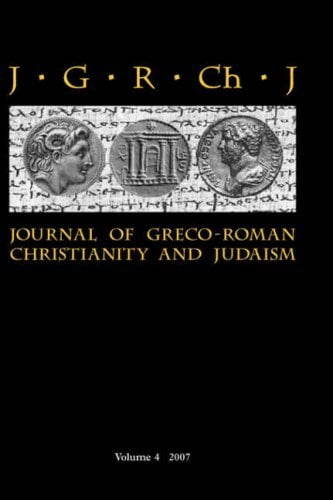The linguistic situation in Palestine during the first century AD was, to say the least, quite complex because it involved interaction among four different languages—namely, Aramaic, Hebrew, Greek, and Latin. The presence of other languages is also apparent, and although few individuals were probably fluent in three or more of these languages, many were probably bilingual ( Poirier 56). In seeking to understand this multi-faceted situation, our strategy will be to handle the less common languages first and proceed to the more common ones. Although language distribution “varied almost personally” ( Poirier 56, quoting Barr 112), of primary concern will be the question: Which language(s) held vernacular or nearly vernacular status?
Languages like Coptic (from Egypt) and Persian (from eastern Mesopotamia) appear in first century Palestine, at the very least in loan-word form ( Blass, Debrunner, and Funk §6; cf. Wilcox 981). Yet, while these languages may have been present, one must regard their influence in Palestine during this period as minimal. Slightly more influential and prominent was the Latin language ( Blass, Debrunner, and Funk §5; cf. Poirier 55). For instance, some Greek suffixes during this period appear to have been influenced by Latin ( Blass, Debrunner, and Funk §5.2). Moreover, given the Roman governance, which was in place in Palestine, one would expect, as is in fact the case, that various Latin governmental, administrative, military, legal, and commercial terms and expressions would be adopted by speakers whose primary language was not Latin ( Blass, Debrunner, and Funk §5.1, 5.3). Additionally, beyond these individual terms, some phrases of Latin origin were also current in Palestinian Greek ( Blass, Debrunner, and Funk §5.3).
In this post:[caption id=“attachment_1985” align=“alignleft” width=“90” caption=“Frederich Blass, Albert Debrunner, and Robert Funk”]  [/caption] [caption id=“attachment_2499” align=“alignleft” width=“80” caption=“Stanley Porter et al.”]
[/caption] [caption id=“attachment_2499” align=“alignleft” width=“80” caption=“Stanley Porter et al.”]  [/caption] [caption id=“attachment_2503” align=“alignleft” width=“90” caption=“Hildegard Temporini and Wolfgang Haase”]
[/caption] [caption id=“attachment_2503” align=“alignleft” width=“90” caption=“Hildegard Temporini and Wolfgang Haase”]  [/caption]
[/caption]